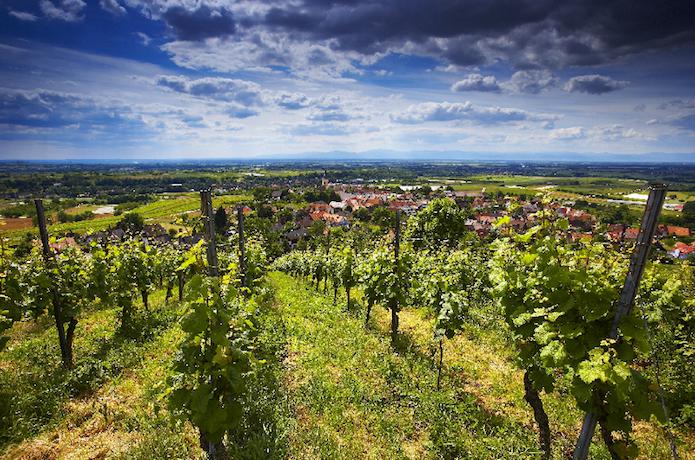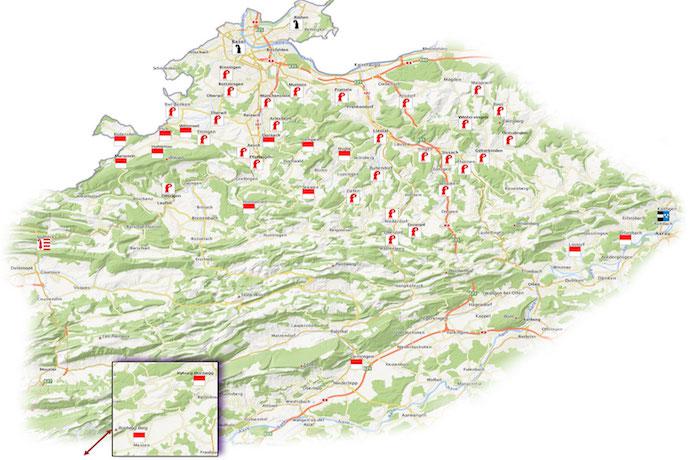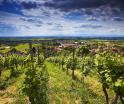Basel region (BS, BL and SO)
The wine region of Basel comprises the wine-growing areas of the two half-cantons of Basel-Stadt and Basel-Landschaft, as well as since 2011 the wine-growing areas of the canton of Solothurn.
Winegrowing has long been rooted in Northwestern Switzerland. Today, the vineyards cover an area of some 150 hectares. This surface increases almost every year.
The climate is favorable for viticulture. Basel features a temperate oceanic climate. It is influenced by the Upper Rhine Plain, which has a connection to the Mediterranean via the Belfort Gap or also called Burgundian Gate.
The south-facing slopes of the Tafel- and Falten-Jura, located below 500 m above sea level and facing south, are where the vast majority of the vines thrive. Over the millennia, the soil has been formed from the strongly calcareous deposits of the primeval Jurassic Sea. Its composition and structure are ideal for the implantation of the vine.
In the wide range of cultivated grapes, the two main grape varieties are Pinot Noir and Riesling- Silvaner (Müller-Thurgau), followed by Chasselas (Gutedel), which is also grown in the vineyards of nearby Germany.
Thanks to modern methods of wine-making, new varieties and the quality awareness of innovative winegrowers, the wines of the Basel region are known far beyond the regional borders.









